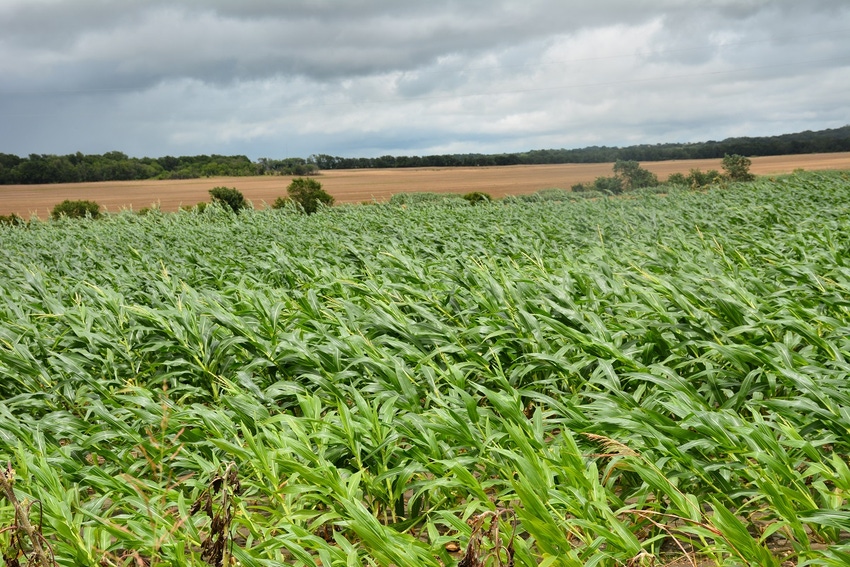
Central Texas corn and grain sorghum crops are showing various symptoms of plant stress following weeks of persistent rain. Stunting, nutrient deficiencies and non-uniform growth within fields are common across the area.
But some plants also show signs of drought stress, says Texas AgriLife assistant professor and Extension agronomist, Ronnie Schnell.
Schnell, speaking at the 52nd annual Stiles Farm field Day last week in Taylor, Texas, said corn roots have been so saturated they have not developed properly and in some cases have been severely damaged by too much water. Following a week of dry weather, “some corn had begun to curl up,” Schnell said. “We went from saturated to drought stress in a week.”
He told the audience, which was moved indoors for the first time in the Stiles Farm Field Day history, that persistent rainfall had dumped as much as 15 inches on some areas in May, resulting in saturated or flooded fields. Those saturated soils and root system damage resulted in “the root system’s reduced ability to capture water.”
For the latest on southwest agriculture, please check out Southwest Farm Press Daily and receive the latest news right to your inbox.
Nutrient uptake is also restricted, leaving many plants with uneven growth and the tell-tale yellowed leaves that indicate nutrient deficiency. With heavy, persistent rainfall, much of the nutrients already applied are no longer available and plants may be beyond the optimum time to apply more fertilizer.
Schnell says producers likely will not avoid yield loss, possibly severe yield loss, but they may salvage some yield by applying fertilizer to fields that have decent stands and a reasonable chance of some recovery.
“For corn, early nitrogen application is best,” Schnell said. “So how late can we apply nitrogen and still see benefit? Missing the best application window probably means a 10 percent to 15 percent yield loss. But we can still get some yield advantage with application at the V-10 to V-12 stage. Expect reduced yield, but it’s possible to get some yield.”
Saving yield
He said late fertilizer application also may improve yield potential for grain sorghum in saturated soils. “Reduced yield will be likely compared to early application but it may be possible to add some yield.”
The uneven crop makes pest control problematic for grain sorghum producers. Plants in low spots with more saturated soils may develop later than sorghum in more well-drained sections of the field. “That uneven development means plants will flower at different times so we can expect a pest management issue.” Midge infestation, for instance, will be spread out and the field will be vulnerable to damage longer with an early flower and a later flower period.
Schnell said corn producers may see less potential for kernel production. “The saturated soils may delay silk emergence. When the tassels begin to shed pollen no silk will be available to catch it and that could result in a reduced kernel set.”
About the Author(s)
You May Also Like






